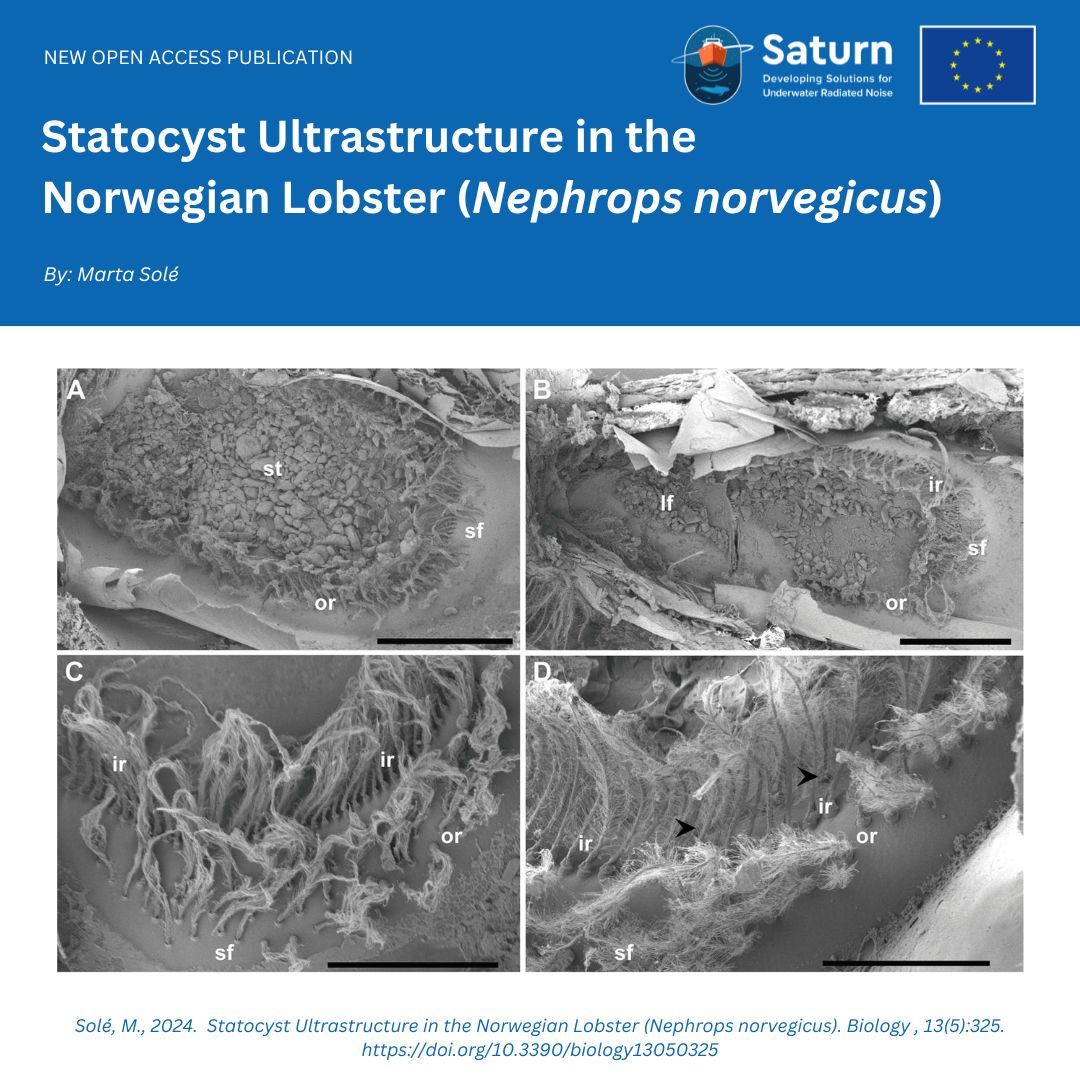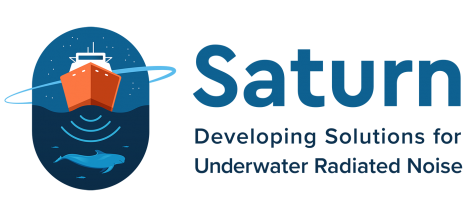
New open-access publication on the Norwegian Lobster (Nephrops norvegicus)
A new open-access publication ‘Statocyst Ultrastructure in the Norwegian Lobster (Nephrops norvegicus)’ from the Saturn project is now available to read through the journal ‘Biology’.
In this study, Saturn describe the structure of the Norwegian lobster (Nephops norvegicus) statocyst using scanning and transmission electron microscopy. These results contribute to the understanding of sound perception systems in an additional crustacean species in order to favor actions for marine noise pollution mitigation to protect the marine fauna.

Abstract
Statocyst anatomy and fine morphology in Norwegian lobster (Nephrops norvegicus) are studied for the first time using scanning and transmission electron microscopy. N. norvegicus exhibits sensory setae projecting from the statocyst inner cavity floor into a mass of sand granules (statoconia) embedded in a gelatinous substance. The setae are distributed in four areas: a curved field made up of an inner single row and an outer double row that run on a circle around the medial and lateral rim of the central depression, a small setal field in the posterior part, a large setal field, opposite to the small field, and a short row, running internally and lying parallel to the inner single row, next to the small setal field. A study of the fine morphology of the statocyst sensory setae shows that the structure of the setae in the different areas is similar, with a bulb (the proximal portion of the sensillum), a setal shaft, a tooth (the smooth portion of the bulb), a fulcrum (a transverse fold), and filamentous hairs. The hair cells are firmly implanted within the cuticular layer. Although the type of innervation of the statocyst was not determined in the present study, the close taxonomic position of the lobster to that of the crayfish and crab would suggest that the setae in N. norvegicus are pure mechanoreceptors rather than sensory cells.





